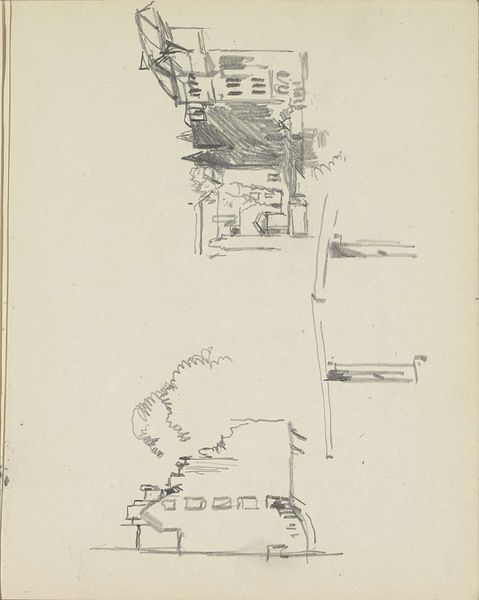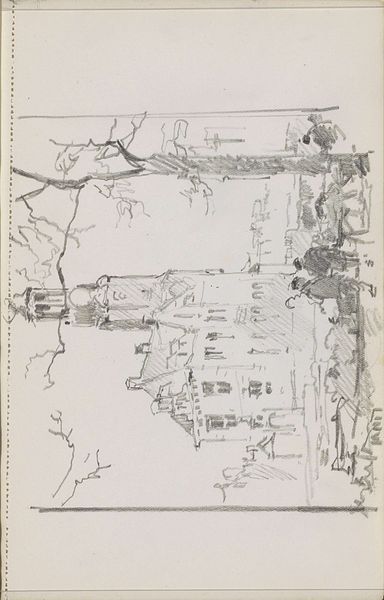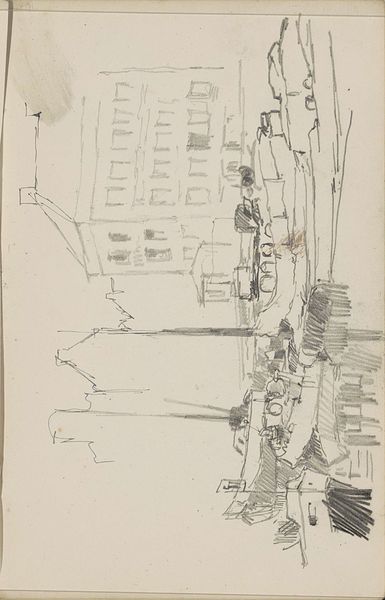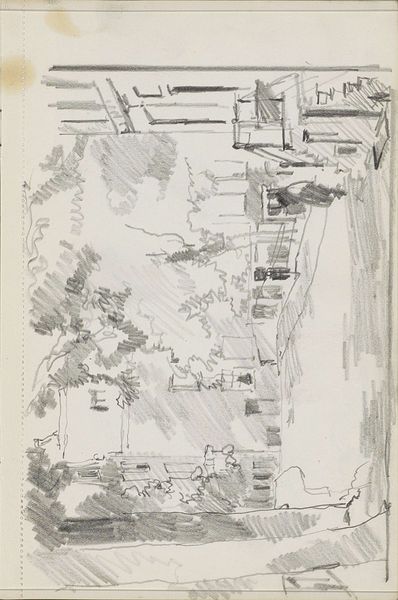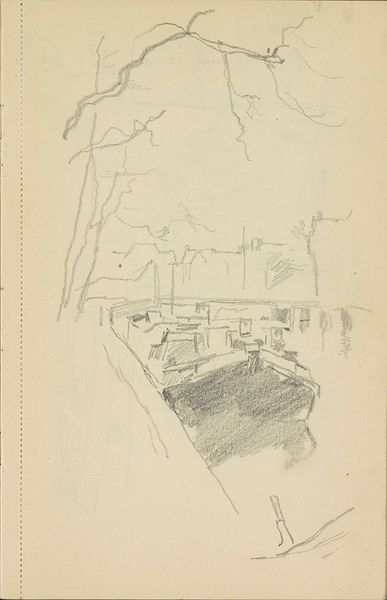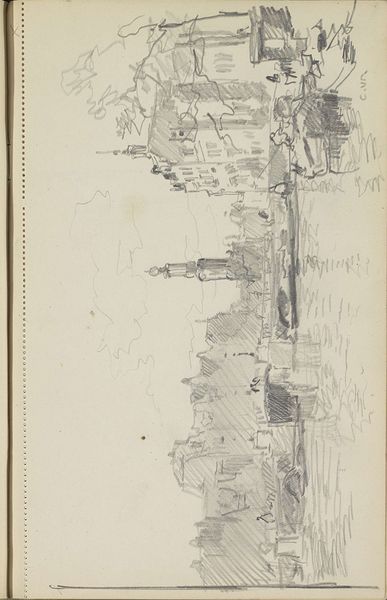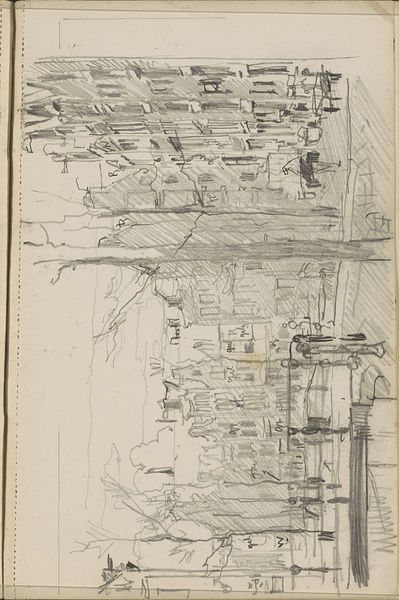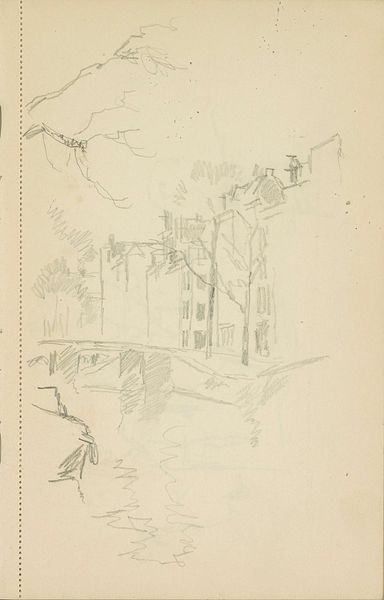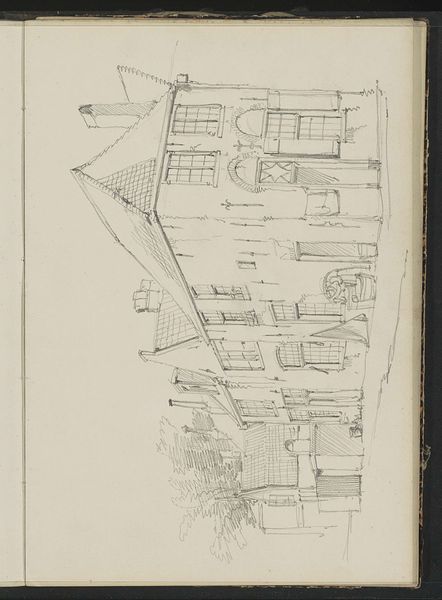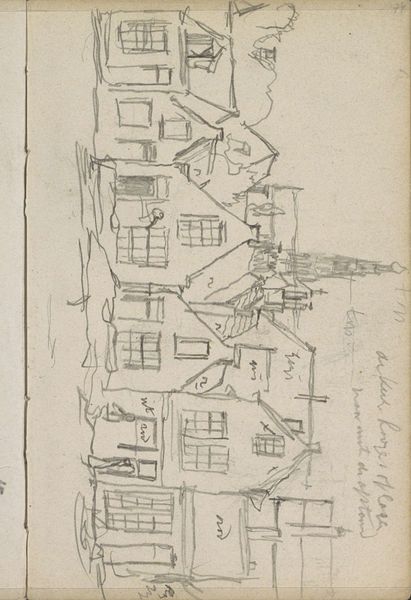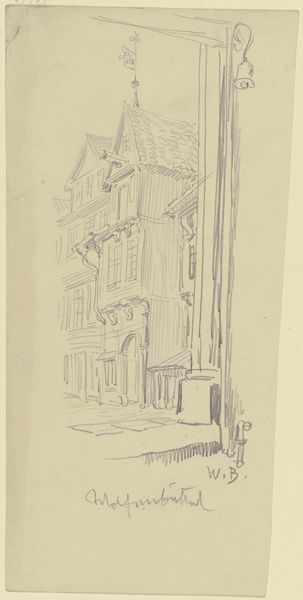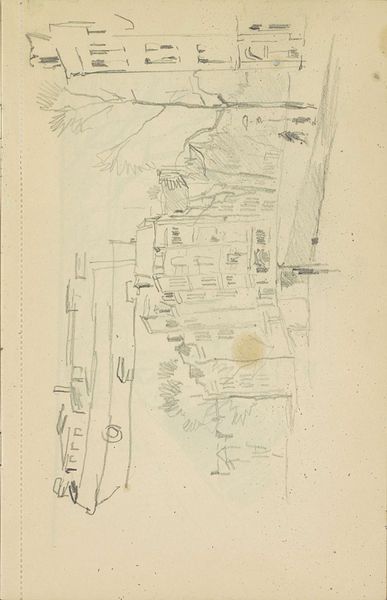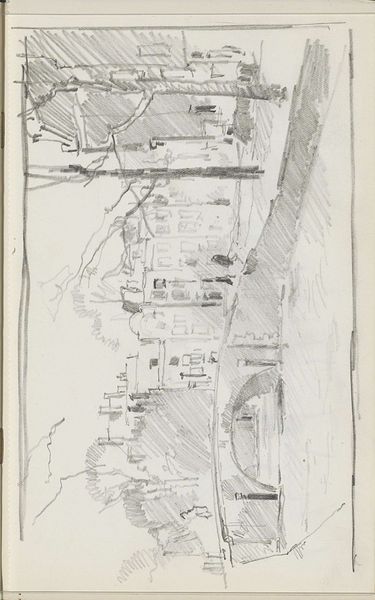
drawing, pencil
#
drawing
#
pencil
#
cityscape
#
street
#
realism
Copyright: Rijks Museum: Open Domain
Curator: This delicate pencil drawing offers us a glimpse of Dutch urban life. The Rijksmuseum holds this sketch, “Rijtjeshuizen aan een gracht,” or “Row Houses on a Canal,” attributed to Cornelis Vreedenburgh and thought to have been created sometime between 1890 and 1946. Editor: It’s quiet, isn't it? Almost ghostly. The soft pencil lines create this hazy atmosphere. The reflection in the canal gives it an almost surreal quality, as if we are seeing two worlds superimposed. Curator: It certainly captures a fleeting moment. Vreedenburgh was known for his cityscapes, often depicting Amsterdam and other Dutch towns. His choice of rendering in pencil emphasizes a sort of temporal reality, fleeting. The choice resonates powerfully, perhaps to echo a time that will also fade, will reflect and decay. Editor: I wonder about that reflection...what did canals and rivers symbolize during that time period? It's almost as though it presents a different perspective of societal reality versus lived expectations. Also, it's hard to avoid looking at the skeletal tree in the sketch, it gives it almost an ominous, dark feel despite the calm, pastel rendering. Curator: Water, often depicted as a feminine symbol, suggests potential change or the natural flow, especially within art created during the period that saw great technological advances that uprooted so much social continuity. In light of those major socio-historical shifts, Vreedenburgh shows the canals to provide life. And perhaps, in concert, death. As for the tree you pointed out... the skeletal nature makes us consider ideas of cyclical realities; birth, life, death, renewal. That makes the artwork even more potent with multiple layers of symbolism in a drawing about architecture and social places. Editor: You are right; the symbolism elevates this from just a simple cityscape to something more evocative. It invites the viewer to ponder their own relationship with their social environment and how reflections on time alter experiences, much like in reality itself. It also seems like a comment on memory. Curator: Precisely, and that kind of introspection becomes even more crucial when one thinks about its artistic choices. Its simplicity emphasizes the psychological dimension that permeates seemingly placid streets of Holland. Editor: It makes one look at Dutch cityscapes with a completely new level of interest. Thank you for this conversation! Curator: My pleasure. Thank you for providing such compelling points on which to engage.
Comments
No comments
Be the first to comment and join the conversation on the ultimate creative platform.
